Good Highlight Colors to Brown for Painting
This post may contain affiliate links. We may earn a small commission from purchases made through them, at no additional cost to you.
Brown might not be the first color of choice when it comes to asking someone what their favorite color is. However, the brown color and all the various shades of brown can be found all around us. All types of brown are, therefore, used in paintings as well as in décor to bring in a certain atmosphere and feeling to a room. Brown is not a single color, although some of us will associate it with a particular brown color, there are numerous brown shades to consider.
- 1 History of the Color Brown
- 2 Shades of Brown
- 2.1 Popular Shades of Brown
- 2.2 Scientific Hex Codes for the Color Brown
- 3 How to mix Brown Colors With Acrylics?
- 4 How to Make Brown Shades With Watercolors?
- 5 Ways to use Shades of Brown
- 6 Frequently Asked Questions
- 6.1 How Can You Use Brown in Art?
- 6.2 Can You Paint Walls Brown Shades?
- 6.3 Is Brown a Neutral Color?
- 6.4 How Is Brown Created From Primary Colors?
- 6.5 Does Gray Go With Brown Shades?
History of the Color Brown
Way back during prehistoric times, a natural clay pigment consisting of manganese oxide and iron oxide was used to paint on cave walls. Umber, another natural pigment, was used by the Egyptians, in various tomb paintings. You will also notice lighter tan colors used by the Greeks on their ancient storage jars, also known as amphorae. Keeping with the Greeks, and including the Romans, they produced a reddish-brown ink known as sepia, which was obtained from cuttlefish. Back in the Renaissance period, this color was used by famous artists like Leonardo da Vinci amongst others. Today, this color is synthetically produced. Ancient Romans considered the color brown as something the lower classes would wear.
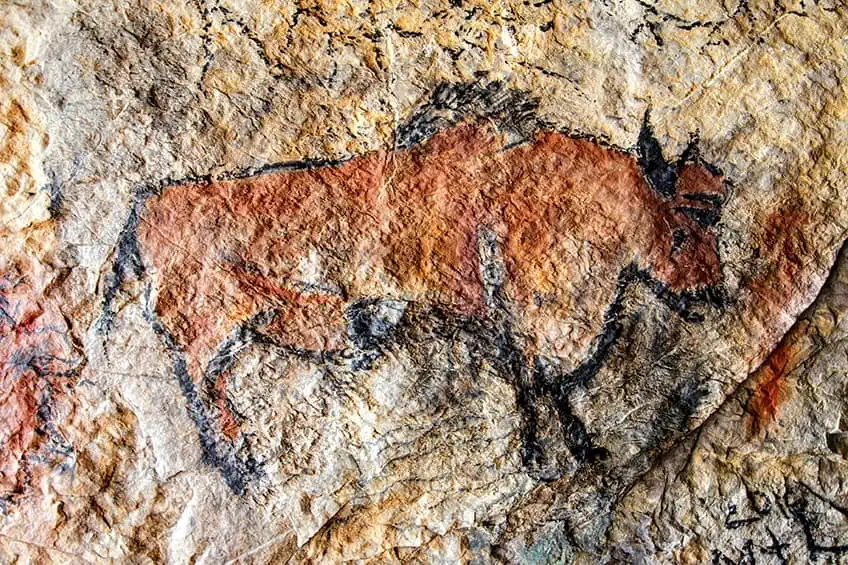
Many considered brown to be the color of humility and was worn by monks in the Middle Ages. During this time, dark colors, including browns were not used often as brighter greens, blues, and reds were preferred. Only later, closer to the sixteenth century, did the color brown become more popular. Even then, the color was limited to four brown shades namely, burnt sienna, burnt umber, raw umber, and raw sienna. All of which was obtained from natural sources of clay and earth.
Famous artists, like Rembrandt, used brown color to create chiaroscuro impressions of his art pieces, where it was used to create a great contrast in light and shadows. During this time, a brown color which became known as Van Dyck brown became popular. Later in the twentieth century, brown became synonymous with all things natural and healthy. Consider brown paper bags, brown wrapping paper, and brown sugar.
Shades of brown are now also more common in décor around the home as natural colors have become quite popular. The different types of brown can bring in a sense of security, elegance, warmth, and have a grounding effect. Brown also usually represents the seasons of winter and fall.
Shades of Brown
Brown colors come about by combining the primary colors, which are yellow, red as well as blue. However, when painting, you need to create different shades of brown to represent various things like wood, skin tones, and hair. Varying brown shades are also used to enhance lighting effects and shadows.
Brown can be dark, or light and warm, or cool. The color value of brown can be altered by making it darker or lighter. This can easily be done by mixing in black or white paint. The intensity can be changed by adding its complementary color, making it brighter or duller. To create shades of brown, you need to understand the brown color palette better. We have already mentioned that primary colors mixed equally can make brown. You can then lighten this by simply adding white. Combine all three primary colors in different ratios and you will get different shades of brown. Then you have your secondary colors:
- Yellow and red create orange
- Blue and yellow create green
- Blue and red create purple
Instead of three colors, you can now use two to create brown. For example, you can take red and combine it with green to make a brown color. Blue and orange also make brown. When making a brown color with all three primary colors, you can influence the color and create varying shades by adding some of the secondary colors. For example, you can create a brown and then add undertones of green, orange, or purple.
Next, you get complimentary colors, which can be found on a color wheel facing each other. So, when you look for red, the color opposite should be green, the opposite of blue should be orange and for yellow it is purple. Combining these 'opposite' or complementary colors creates brown. There are many colors between these, which in turn, can create a variety of brown shades.
We have mentioned that to lighten a brown color, you can simply add white. However, to darken brown, black can be used in small amounts. In most cases, however, it might be better to add a darker color instead of black. For example, if you blended orange and blue, use more of the blue for a darker shade. You can also try using purple to create darker shades of brown.
You can create warmer brown colors by adding more orange, yellow, or red. On the other hand, cooler browns can be created by using more blues and greens. Always mix colors in small amounts and carefully, you can always include more.
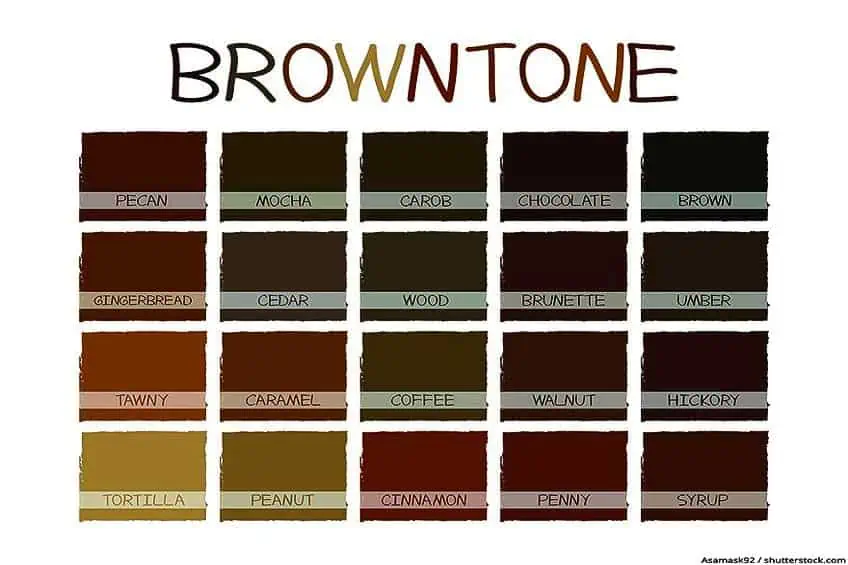
Popular Shades of Brown
Even though you can easily create several brown shades, it is amazing to know that there are hundreds of shades of brown. Each of these colors has its own unique name as well as color code, especially for use on digital devices. The color code is known as a hexadecimal (hex) code and consists of six letters and numbers preceded by a hashtag. These letters and numbers represent the amount of red, as well as green, and also blue in a specific color. Some of the more common and familiar shades of brown include:
- Beige
- Tan
- Espresso
- Chestnut
- Chocolate brown
- Wood brown
- Dark brown
- Light brown color
Since you have such a broad brown color palette, you are bound to get some unusual and descriptive brown color names. Here are some lesser-known varieties. These include darker and lighter brown colors. All of these colors come with a brown color code to help identify them when doing things like graphic designing.
- Seal brown
- Mahogany brown
- Burnt umber
- Desert sand
- Fortune cookie
- Maple syrup

Scientific Hex Codes for the Color Brown
Below are the brown hex codes to the above brown colors. We have also included the brown color code or hex code as well as the percentage of red, green, and blue. CMYK represents the amount of cyan, and magenta, as well as yellow and black, which work with printing.
| Brown Color Name | Shade of Brown | Hex Code | RGB % | CMYK |
| Beige | #f5f5dc | 96.1, 96.1, 86.3 | 0, 0, 10, 4 | |
| Tan | #d2b48c | 82.4, 70.6, 54.9 | 0, 14, 33, 18 | |
| Espresso | #541b14 | 32.9, 10.6, 7.8 | 0, 68, 76, 67 | |
| Chestnut | #986960 | 59.6, 41.2, 37.6 | 0, 31, 37, 40 | |
| Chocolate Brown | #623412 | 98,52,18 | 0, 69, 100, 68 | |
| Wood Brown | #c19a6b | 43, 34, 24 | 0, 20, 45, 24 | |
| Light Brown Color | #b5651d | 71, 39.6, 11.4 | 0, 44, 84, 29 | |
| Seal Brown | #321414 | 19.6, 7.8, 7.8 | 0, 60, 60, 80 | |
| Mahogany Brown | #c04000 | 75.3, 25.1, 0 | 0, 67, 100, 25 | |
| Burnt Umber | #8a3324 | 54.1, 20, 14.1 | 0, 63, 74, 46 | |
| Desert Sand | #edc9af | 92.9, 78.8, 68.6 | 0, 15, 26, 7 | |
| Fortune Cookie | #584d3f | 88, 77, 63 | 0, 12, 28, 12 | |
| Maple Syrup | #bb9351 | 73, 58, 32 | 0, 21, 57, 27 |
How to mix Brown Colors With Acrylics?
Acrylics are fun and easy to work with, especially when blending colors. You can easily experiment with brown shades using the primary colors. Doing it with the primary colors is sometimes best as you can alter the ratios and make the brown color warmer or cooler much easier. Having a set of primary color acrylic paints will make it simpler to customize the brown shade you are looking for. You must have the following to mix your brown color with acrylics.
- Paintbrush
- Palette knife
- Mixing palette or surface for mixing the paint
- Acrylic paints: blue, red, yellow, and white
- Rags or paper towels
There are various types of reds and blues you can choose, but here we are going to be using the following colors:
- Cadmium red
- Cerulean blue
- Cadmium yellow
You can also add titanium white to the list. Prepare your brown color palette by placing equal amounts of each color onto your mixing surface. Leave a little space between each of the colors and do not forget to also add some white paint. Take from each color, the same amount, and blend. This will be done close to your original color blobs. Mix with the palette knife, which should slowly form a brown color. Depending on what hue of the primary color you used, the result may differ slightly for everyone.
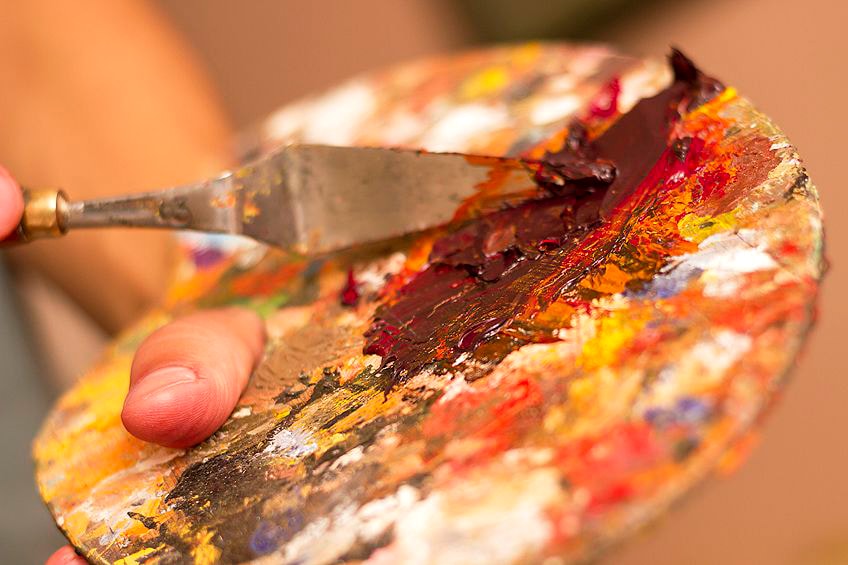
Now, add in a tiny amount of white to make a more distinctive brown color, also helping to improve surface coverage on your canvas. You have now created a simple brown color, and if you are happy with this, you can start painting with it. However, maybe you need something different for your painting. You can now adjust this basic brown by adding different ratios of primary colors.
Lighter shades of brown are great for things like creating highlights or adding lighter hair colors. The process is simple, include a small amount of white to your basic brown to lighten it. Work slowly and carefully as you do not want to mix in too much. You can also blend in a small amount of one primary color to create a richer color. Adding a touch of blue will create a light brown that is cooler while adding red will make it warmer.
Warmer browns are great for areas that display sunlight, or if you are painting bricks or various wood tones. Simply adding a little yellow or red to the basic mixture until you reach the desired color. If you have overdone it slightly, you can always add a touch of blue to bring the color back down again. The opposite is true for cooler browns, simply add small amounts of blue to your basic brown. Add a little bit of red paint if you think it looks a bit too blue. Cooler browns are perfect for painting dark furs as well as wood tones.
Reaching darker brown tones, you can add dark blue paint to the brown, for example, ultramarine blue. You can add black to darken a brown, however, this can give rise to a muted and lackluster color. There are many shades of brown, so the only real way to discover these combinations is to experiment and keep a color palette record so you can achieve similar results for future projects.
How to Make Brown Shades With Watercolors?
Painting with watercolors can be challenging, so experimenting can help you gain more confidence before attempting an art project. Only blend colors and use them when you need them as the paint can dry fairly quickly. You can mix the paints in a watercolor tray or on a plate. Create a tiny puddle of water on the surface, then add your paint color. You can combine various paint colors into the water. When applying to the surface, you can also wet the area you are busy with before painting it. Instead of mixing the paint in a tray, you can also mix directly on the painting surface. However, this method is best done by those with more experience.
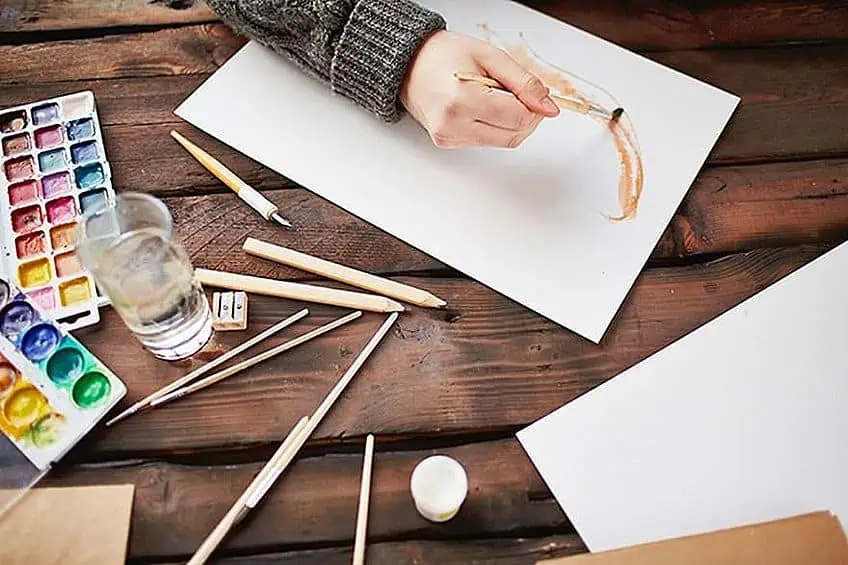
You can create brown colors by using the primary colors as with the acrylic paints. You can also use colors you have, for example, you can blend orange and blue, which will be a good base color to start with. Depending on the blue you use, you can also create different brown colors. Using a darker and lighter blue will produce different results. Cerulean blue is great for creating lighter colors, while ultramarine blue can be used for darker shades. You can also adjust the color by adding a little red, yellow, or purple to create the exact brown shade you want. Again, experimenting is a great way to gain experience.
Ways to use Shades of Brown
Brown is a fundamental color when it comes to painting. You can create amazing results for skin tones, hair, and trees or wood. Think beach sand, rocks, and most landscape paintings require some shade of brown. Also, shades of brown can play a part in forming highlights and shadows. Many also use brown, as a neutral color for backgrounds as a white canvas can affect colors and make it difficult to get the correct paint colors.
Always cover a white canvas with a color background as it can make your final painting look more professional and create a tonal mood, even before you begin to paint. Adding a ground color can also speed up the process of painting. An already painted surface can also seem a little less daunting to begin with. We have mentioned it creates a tonal mood, for example, painting an autumn landscape, you can use a warm brown background. The more common colors used for this purpose include burnt sienna and yellow ochre as they are quite versatile.
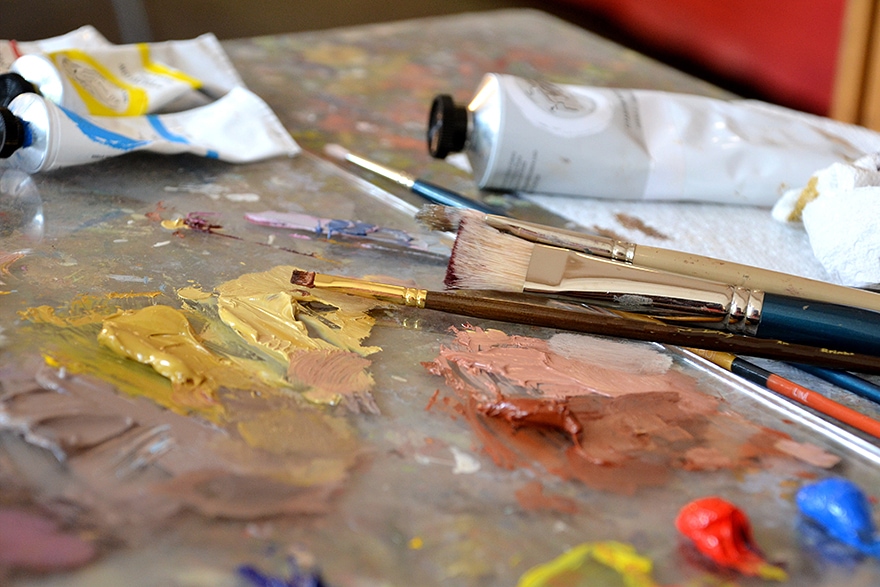
Painting your home with shades of brown can also be a way of creating a welcoming and comfortable atmosphere. Brown can be a rather dull color; however, it is versatile and can work great if used with other colors that work well together. It is also helpful to understand the undertone of your brown. Cooler browns tend to work better with blues and greens, while warmer browns work best with reds, oranges, and yellows. Many interior designers also recommend you opt for a matte brown paint finish as a glossy brown wall reflects light and can make a space look smaller than it is.
Frequently Asked Questions
How Can You Use Brown in Art?
Brown shades of color represent earth, wood, and warmth. Shades of brown can easily form a foundation color to many paintings, especially those that represent winter and fall seasons. You can naturally pair it with green to create more of an organic look and feel. Browns are also used in skin tones and hair color or fur colors in animals. Brown is an extremely versatile color that can be used to create highlights and other effects.
Can You Paint Walls Brown Shades?
All types of brown lean towards earthy and neutral colors that can create elegant and relaxing environments. Brown shades can be used in bedrooms as it is calming and has even been said to increase serotonin levels. Brown can also be incorporated quite easily into any room in the home including living areas, kitchens, and bathrooms.
Is Brown a Neutral Color?
Yes, brown is a neutral color along with white, black, beige, tans, ivories, and gray. Neutral colors do not have a lot of saturation or intensity. You can create these neutral colors by combining two of the complementary colors.
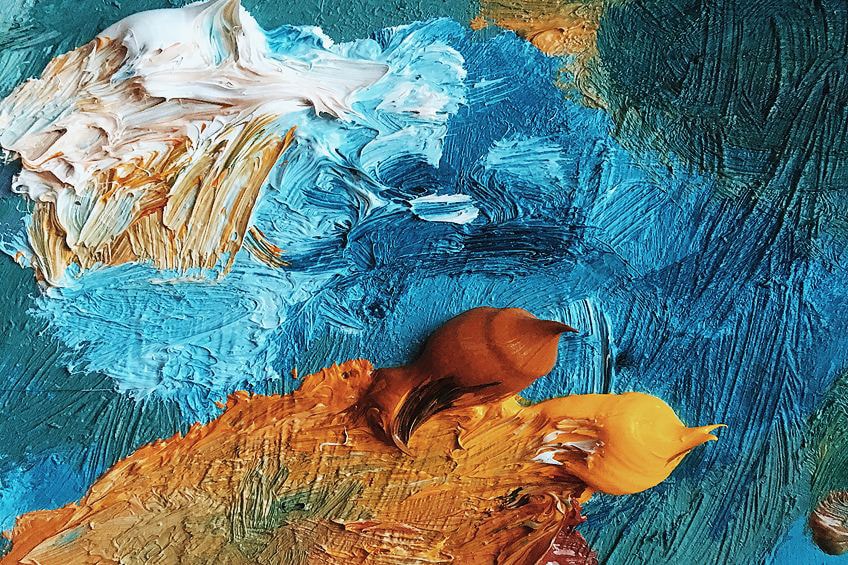
How Is Brown Created From Primary Colors?
Add equal amounts of paint of each primary color onto a mixing palette. Three amounts of red, yellow, and blue can be placed a little ways from each other, but still close enough to mix easily. Take the same amount from each and blend with a palette knife. You can also include a tiny amount of white to lighten the color. You can then add a primary color to change the hue.
Does Gray Go With Brown Shades?
Both brown and gray are considered neutral colors, so they should work well when used together. These colors are also versatile and can usually go with many other color combinations.
Good Highlight Colors to Brown for Painting
Source: https://acrylgiessen.com/en/shades-of-brown/